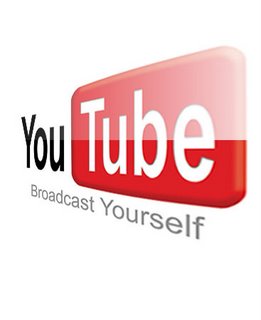
by Francois Muscat | Oct 28, 2015 | Social Media Optimization, Website Optimization
Managing a social media portfolio is no simple task. With comments and reactions happening in real time, across all different time zones, a manager tasked with this has to be made of strong stuff. Time management is crucial to the smooth running of such an operation, as is planning. Without these, a social media manager could easily be overwhelmed, drowned in work that seems to have no office hours and end up quitting or burning out, neither of which are attractive options.
Here are some tips on managing your time as a social media manager:
- Set goals for yourself that are time or deadline specific; achieving your goals in a day, week or month can be enormously satisfying and will motivate you as well as increase your productivity.
- Devise a marketing plan for the year that draws on the brand or the mission and objectives of the business. This will help to identify your target audience and assist in shaping the content you need to create.
- Try to schedule meetings and appointments for one or two days of the week – daily meetings at varying times during the day can be very disruptive when you need time blocks for writing and posting.
- Work with a content calendar: this will help you see the big picture as it combines all the various elements of social media together in one place. There are many good and free calendars online. Include scheduling on your calendar so you know what needs posting where and when, so there are no last minute panics.
- Focus your energy: distractions can lead to many hours wasted, so when tackling a task, do it properly. Put your phone on silent, close your email and close any windows that you do not need for the task at hand, especially chat windows.
- Take notes: as a social media manager, you are constantly on the lookout for new ideas for content. If you see something or think of an idea when you’re not at your desk, write it down for later use.
- Look at online tools to help you with your job: there are tools available to help with content generation (Scoop.it, Storify, TrapIt) and social media management (Hootsuite, Buffer, Sprout Social).
- Measure results: it is very difficult to know the success of a marketing strategy if you don’t measure results, in terms of returns or profitability. Dedicate a fixed time slot each month or week, to analyse results.
- Use templates: these can save a lot of time and can guide less experienced staff very effectively. Especially good for content writing, a blog template can be used when asking employees to contribute to the website content.
- Know when to ask for help: if you are getting out of your depth, or if things are mushrooming at a pace you cannot keep up with, it could be time to outsource, or get help from social media marketing experts.
WSI can offer you advice on the best ways to manage your social media
As a social media manager, it can be hard to separate your work life from your free time. Managing your time and sticking to your schedule will help to show the people you work with that you are not on call 24/7. WSI, a well established digital marketing company, can assist with all aspects of your social media marketing and much more. Check out their website or contact them today if you want to take control of your time and reap the rewards.

by Francois Muscat | Oct 26, 2015 | Website Design, Website Optimization
Plugins are like the bells and whistles of website design. They add shimmer and shine to the basic function of a WordPress site, and while there are thousands of free and pay-for plugins out there, we’ve compiled a list of six of the best.
Here are the top six must-have plugins:
- WordPress SEO
The first, and most important, plugin is WordPress SEO (Site Engine Optimisation). This is crucial to all ecommerce businesses. Why? Because without it users won’t get to your site. It puts your ecommerce business on the map, and preferably at the top of the list. Research shows that most users visit the top five listings in a search, so if you’re going to use a plugin, use this.
- Google Analytics for WordPress
This plugin allows you to track all aspects of your ecommerce site. It allows you to see who visits your site, where they’ve come from and what device they are using. Besides informing you about your audience, it gives you comprehensive reports on bounce rates, behaviour, conversion and real time, among other things.
- Mailchimp widget
Email marketing is an inexpensive way to drive traffic to your website and garner new customers. The Mailchimp widget allows you to easily drop an “email sign-up” onto a sidebar, making it a simple process for customers, and also for you to manage your contacts.
- NextGen Gallery
Pictures make or break a site and perhaps that’s why this is the most popular WordPress plugin. The NextGen Gallery allows you to have control over the images that you add to your site. You can create galleries and albums with various options available, including a lightbox effect and style and size edits, plus loads more.
- Contact Form 7
This is how you add forms to your site, even if you’re not an HTML whizz. The plugin allows you to customize the form to suit your needs and manage multiple forms simultaneously. It’s simple, smart and easy.
- Share this
Share this helps you increase social activity on your site by making it easier for visitors to share your content – they simply click a ‘share this’ button. This plugin gives you access to several social media platforms too, including Twitter, Facebook and Pinterest.
Need help designing or developing an ecommerce website? Then contact WSI OMS today.

by Marianna Muscat | Oct 20, 2015 | Website Optimization
Quite simply put, the percentage of visitors to a particular website who navigate away from the site after viewing only one page, is known as the bounce rate. A rising bounce rate is a red flag that says your home page is boring or off-putting, or a sign that users found what they were looking for on one page and had no need or interest in searching further.
Research shows that the average bounce rate is 40.5%, but it does differ depending on the industry. Many of the bounces come from first time users. Since a bounce rate can measure how effectively your brand is resonating with your site visitors, it should not be ignored. Indeed, there are quite simple ways to decrease your bounce rate. As a visitor decides in 8 seconds or less whether or not to stay on or leave your website, it’s worth trying every trick in the book.
- Focus on your target audience
It makes sense to deliver content that speaks to your target group. Using keyword optimisation ensures you have the right visitors to your site in the first place.
- Look at the navigation on your site
It should be direct and simple and easily lead your visitors in the right direction. It helps to use images to convey your point or show your products, as well as large call-to-actions. If your site offers a lot of services or products, use drop down menus to make navigation quick and straightforward.
- Use targeted content for first time users
There are many audience targeting tools available on the internet, getting the right content can be advantageous. Capturing the interest of a first time user in a way that will bring them back to your site will reduce bounce backs.
- Use content recommendations to increase engagement
Using pop-ups or sidebars with personalised content recommendations can drive 50% more click-throughs.
- Be mobile friendly
More than half of all internet users consume content on their mobile devices, so making sure your website works on all devices, by using responsive design, is a very sound investment.
- Deliver on expectations
Ensure your ads and posts are not misleading and your content is engaging. A poorly designed website can waste a lot of time and leave users feeling mistrustful and unlikely to return.
- Be clever with social media
People often use Twitter and Facebook these days to check out brands before visiting the websites. Being present on social media platforms will meet the expectations of users and give them a reason to engage with you. Use email and social media to send content to users, rather than waiting for them to visit your site.
- Redesign your website
Some tweaking or a complete overhaul may be what your site needs to reduce bounce rates. Try the following:
- Remove unnecessary clutter.
- Make sure navigation is clear.
- Make sure there is no confusion on the landing page and that there is a clear call-to-action.
- Reduce or remove 3rd party content and widgets, as these weigh a site down and increase the loading time.
- Make sure your content is easy to read; use larger fonts.
- Make sure there is spacing between lines and paragraphs.
- Don’t drown the home page with loads of text.
- Use headings and sub-headings.
- Audio or video content on autoplay can be very annoying.
- Use good colour contrasts.
- Try page level surveys
Using a thumbs up/thumbs down survey button on the bottom of the landing page (one not requesting a log in) will provide you will instant feedback from visitors to your site and their reason for bouncing.
- Set realistic goals for yourself
Track bounce rates against your historical performance and goals. Ground your expectations in reality.
Website analytics from WSI
WSI, an established international company, can help determine your website’s bounce rate as well as devise a plan to reduce it. With a team of professionals just itching to get started, WSI can help to redesign your website, improve or change content, install responsive design and many other consulting services to help you get back on track. To find out more about their range of expertise, call or email WSI today.

by Marelise da Silva | Oct 15, 2015 | Visual Marketing, Website Optimization
So you want to know the secret to making a video or infographic go viral? You ask, is it possible? Well, not really – unfortunately no one can predict the reaction of humans. Who would have thought Charlie Bit Me would have got 825 millions views, or a sneezing panda having 216 million? There’s no accounting for taste, apparently.
This said, there are a few success stories out there. As usual, the answer is no quick fix, it’s hard work and perseverance. It wasn’t luck that got the Dollar Shave Club almost 20 million views. CEO Michael Dubin planned the video, filmed it in one day at a cost of $4 500 and strategically released it to coincide with the announcement of $1 million dollar funding and the relaunch of his website. It didn’t hurt, either, that Michael studied comedy – he felt humour was a powerful device to tell a story. And it worked! Even the Dollar Shave Club never expected it to go quite so big so quickly – their server crashed on the second day. With an annual revenue of $65 million, Michael Dubin is still smiling, with more products added to his exclusive club offering.
Another interesting success story is Girl Learns to Dance in One Year (Time lapse). Karen Cheng, an ad designer based in San Francisco decided to chronicle her journey of learning to dance over one year. Karen did a lot of marketing prior to releasing the video and she states that her video going viral was not an accident, but the result of hard work. She posted her video to Facebook, Twitter, Reddit and Hacker News and asked all of her friends to share it. On the 2nd day of its release, bloggers who had seen the video on Reddit began writing about it. Blogs drive a lot of traffic, with millions of followers and readers, which is just what Cheng wanted. By Day 3, the video had made the YouTube front page and had got 1.8 million views. She shared her success story online and summed it up in six points:
- Release your video on a Monday or Tuesday, since most people watch YouTube at work – weekends and holidays are slow. If there’s a big breaking news story, that will also detract attention, so wait for the news to lose traction before releasing your video.
- See if there are any potential sponsors who might be interested in your video. Cheng wore different brands of clothing in her video, used various bits of music and an App to keep her committed to her goal. She contacted each company – some shared her video, some didn’t. But she says to try them all anyway.
- None of this matters if your video isn’t good. People share things that tap into their emotions, so make sure your video elicits awe, excitement, amusement, anger, anything…except of course, sadness and contentment. Or boredom.
- Tell a story: Cheng had a dream of learning to dance and felt strongly about showing people the hard work that comes before achievement. While she doesn’t claim to be a brilliant dancer, her video does show how practice pays off.
- Make the video short. People skip over videos longer than a few minutes (the time it takes to get busted watching YouTube at work). Give it a viral title – short, sweet and catchy.
- Work it. The fame from a viral video doesn’t last very long, so ensure the media can find you. Respond to as many emails as you can. Set up your website before you post, with an email sign-up. Be prepared.
Hoping a video will go viral is not good enough. That’s just luck. Psy Gangnam Style with its 2.3 billion views (why, oh why?) had its fair share of luck, but there was dedication behind that one too. Hard work and determination can pay off.

by Marelise da Silva | Oct 8, 2015 | Blogging, Website Optimization
So who needs email subscribers anyway? Well, anybody wanting to sell more products or services and get their message out to the world, of course. Searching on Google for the mystery answer generally leads to the same suggestions: start writing a blog, market yourself on social media, add an opt-in form to your blog…same old, same old. There has to be something else, something new to try…Here are nine cunning tips to getting more subscribers.
Find out what is trending in your niche, exactly what it is that is keeping people up at night and focus your efforts on that specifically. Posting up-to-date and relevant blogs on the platform most suited to it will create a lot of interest.
- Grab the reader’s attention
There is so much out there and people have limited time so it’s really important to seize the attention and make your article eye-catching. The obvious way is to create an edgy headline (List format: 10 hacks you won’t learn at school; How to format: How to hypnotise friends; Be specific by using numbers and dates: Lose 20 pounds in just 30 days). This also applies to newsletters sent by email – make the subject line short, sweet and to the point.
Blogging every day to the followers on your website will only reach a small amount of people, over a long time. Guest blogging or posting your articles on social media sites is a very effective way to reach a relevant target audience. When guest posting, ensure the host site will allow you to reference your website/author bio, or there’s not much point. Make sure your links are noticeable, i.e. on the same page. Also, check the comments to find out how engaging your content is.
- Get influencers to share your content
Add top influencers within your niche market to your blog post or newsletter and give each of them a heads-up that you referenced them in your article. Chances are they’ll check out what you wrote and share your content with their followers. To find out the influencers in your niche, try: authorityspy, technorati or buzzsumo.
After you have published your blog, add the people you’ve mentioned in your post to the end, using their Google+ name. They will get a notification from Google that their name has been used and will check out where. This gives them the opportunity to share your content with their Google+ platforms.
Give your readers the chance to download a version of your article in pdf format, so they can refer to it later. Use a download option with an opt-in requirement – some readers will pass on it, but it the content is great, others will opt-in. Putting the download option at the top and bottom of your article is a good idea too.
Making it easy and quick for people to sign up for your newsletters will lead to more subscribers. Here are some tips for sign up options:
- Don’t ask for too much information, an email address is all you need at first.
- Include a special offer or new subscriber’s gift when signing up – people love things for free and incentives work well to drive subscriptions. The DMA report (consumer research to email marketers) says 60% of users will sign up for a newsletter to receive special offers/sales.
- Place an opt-in box in the comments
- Add sign-in options to your social media accounts.
- Use pop-ups that appear during the newsletter, but again, ask for only the email address and use a big X for those not interested.
- Use the word ‘free’ in your opt-in copy (e.g. when you subscribe, you will receive a free eBook).
- Be upfront about the frequency of the newsletters – people are nervous of a flooded inbox. Use words such as weekly, monthly or periodically.
Use a postscript at the end of every blog or newsletter to share a link to related content elsewhere on your site. Research has shown that readers often skim read, but always read the postscript. You can also use a postscript to subscribe, e.g. P.S. If you enjoyed this post, why not subscribe to our weekly newsletter? Sign up here.

by Marelise da Silva | Sep 24, 2015 | Social Media Marketing, Website Optimization
Instagram is a fantastic tool to boost your brand awareness and traffic rates. It is a platform that is equipped for picture, written and video marketing. Major brand such as Rimmel, Cadbury, Estee Lauder and more received sponsored ad campaigns from Instagram as part of an initial marketing trail. It goes to prove the marketability of Instagram.
So how can you set up an Instagram profile and benefit from a form of mobile marketing which reaches potential traffic of about 75 million daily users?
Firstly you require a phone which is either iOS (Apple Phone), Android or Windows 8 compatible, then you need to download the app from the app store and install it onto your mobile device. Here’s a guide to setting up an Instagram profile:
Biography
Profile Picture – If you are using your Instagram account for business purposes it would advisable to use either a logo, shortened logo, mascot or acronym related to your business.
Description – This includes information such as your brand slogan or tagline and/or a brief outline of what your company is all about.
Link – You are allowed one link to your profile and you should therefore choose whether it will be directed to your landing page or a specific page.
Linking Accounts – Once you have set up your profile, you will have the option of linking your account to other social media platforms.
Now that your profile is all set up here are a few Instagram Tips:
Hashtags – Hashtags are a great way in which you can market your Instagram posts and in doing so generate more traffic.
Content – You have to be sure to upload content continually to stay in touch with your Instagram market.
Pictures – Use pictures of faces for about 38% more engagement.
Campaigning – You can use Instagram to call on action and promote your visual campaign.
Society as we have evolved today, demands the presence of businesses online. This includes social media profiles and more. Don’t miss out on the plentiful marketing opportunities presented by Instagram.
Call on WSIOMS To help Boost Your Brand’s Traffic today
Contact WSIOMS for all your social media marketing related queries and requirements.







